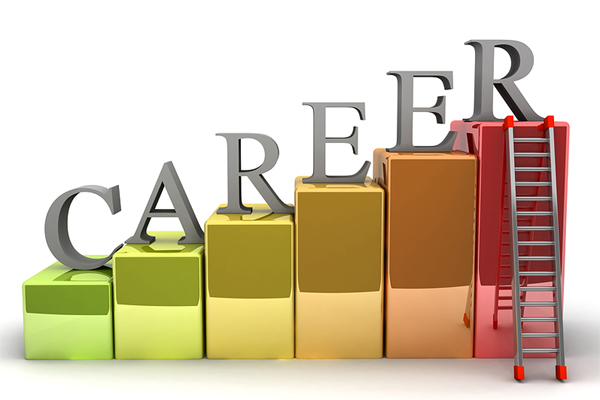



|
Tweet
Pin
It
|
Syllabus
Part -I : Engineering
Mathematics
Part - II : Basic
Engineering & Sciences
Part - III : 1) Civil
Engineering & Geo Informatics | 2) Earth
Science | 3) Mechanical,
Automobile & Aeronautical Engineering | 4) Electrical
& Electronics Engineering and Instrumentation Engineering | 5) Electronics
& Communication Engineering | 6) Production
& Industrial Engineering | 7) Computer
Science & Engineering and Information Technology | 8) Chemical
Engineering, Ceramic Technology & Biotechnology | 9) Textile
Technology | 10) Leather
Technology | 11) Architecture
| 12) Physics
& Material Science | 13) Mathematics
| 14) Social
Science
PART - III (8) Chemical Engineering, Ceramic Technology & Biotechnology
i) Fluid Mechanics and Particle Technology : Classification of fluids, flow patterns, manometry, continuity equation, Navier-Stokes' equation, Bernoulli equation, Dimensional analysis, Flow through pipes, Boundary layer concepts, Flow through fixed and fluidized beds, pumps - classification affinity laws, performance curves. Characteristics of solids, size analysis, Screening, Storage, Conveyance, Size reduction, Classifier, Centrifuges, Cyclones. Filtration, Mixing and agitation.
ii) Chemical Technology and Process Calculations : Gas calculations, Material balance and Energy balance - Steady and unsteady state, Humidity and Saturation, Combustion, Thermo chemistry, Role of Chemical Engineers in process industry, Cement, glass and ceramic industries, paper industry- Oil, soap, detergent industries, petroleum refining and petrochemicals- Polymer industry, Fertilizers, Food industry and other important process industries.
iii) Thermodynamics and Kinetics : Laws of thermodynamics, PVT behavior of fluids, Thermodynamic formulations, compression of fluids, Phase equilibria - Application of the correlation and prediction. Free energy change and reaction equilibria. Refrigeration - principles, performance. Reaction rate - laws, theories, analysis. Design of reactors, Factors affecting design, Thermal reactors and rates of heat exchanges. Non-ideal reactors, Hetrogenous reactors and solid catalysts, Gas- solid catalytic reactors, Gas- solid non-catalytic reactors, Gas-Liquid reactors.
iv) Heat and Mass transfer : Modes of Heat transfer. Heat conduction- steady and unsteady state, Natural and forced convection, Heat transfer to fluids with phase change, heat transfer coefficients, evaporation, heat exchangers - design and construction. Diffusion, Mass transfer coefficients, humidification, drying, absorption, distillation, extraction, leaching, crystallization, adsorption and ion exchange, analogies.
v) Process Control and Computer Applications in Chemical Engineering : Open loop systems, closed loop systems, Frequency response, Advanced control systems, Instrumentation. Application of spread sheet packages in Chemical engineering, Process flow sheeting, Development of software for design of equipments. Dynamic programming in Chemical engineering.
vi) Organic and Surface Chemistry : Carbohydrates, Oils, Fats, and Waxes, Heterocyclic compounds, proteins, dyes and dyeing, pharmaceutical chemistry. Adsorption - types, adsorption of gases over solids, isotherms, applications, ion exchange, adsorption chromatography, Catalysis - types, Equations.
vii) Electro, Polymer and Corrosion Chemistry : Factors influencing Corrosion, types of corrosion, corrosion control. Laws of migration of ions, conductometric titrations, advantages, galvanic cells, reversible and irreversible cells, Standard electrodes, electrode potentials, electrochemical series, Nernst equation. Polymeric materials, Teflon, polyamide, Nylon66, Kevlar, polyesters, polyethylene teryphthalate, poly butylene tetra phthalate, polycarbonates, bakelite, reinforcement, composites. Introduction to spectroscopic analysis, Molecular spectroscopy, IR, NMR, Mass Spectrometry.
viii) Environmental Pollution and Control : Various methods of reduction of pollution, types of pollution, Air pollution - sources and effects- control techniques, Water pollution - sources and effectscontrol techniques, Soil pollution - sources and effects- control techniques and Solid waste disposal.
ix) Bioprocess Engineering : Analysis of STR, Analysis of other configurations, Bioreactor scale-up, Modeling and simulation of Bioprocesses, Bioreactor considerations in Enzyme systems.
x) Cell and Molecular biology : Cells, Cell lines, Cell culture, Cell Organelles and its functions, types of Cell divisions, cell cycle and its regulation mechanism. Transport Mechanism (passive, Active, ATPase pumps and Na+ /K+ pumps), Receptors, Signal Transduction, Models of Signal Amplification Secondary messengers, Structure of Nucleic Acids, Replication, Transcription, Translation and DNA repair mechanism in Prokaryotes and Eukaryotes. Promoters, Enhancers and Transcription factors. Genetic Codes and Lac & trp operons.
xi) Biochemistry and Microbiology : Structure, function and metabolism of Carbohydrates, lipids Nucleic Acids and proteins. Enzymes and its mechanism. Electron Transport Chain system, High energy compound and reducing equivalents. History of Microbiology, Classification of Microorganism, structural organization and multiplication of Microorganism. Physical and Chemical control of Microorganisms, Primary and Secondary metabolites and their applications.
xii) Genetic Engineering : Genes, control of gene expression, Restriction enzymes, Vectors (prokaryotic and Eukaryotic) construction of cDNA and genomic Library. Screening of DNA libraries, PCR, RACE PCR, RAPD, RFLP, AFLP, Site directed mutagenesis, Methods of Nucleic acid sequencing. Cloning vectors in plants, Transgenic and Knockout animals.
xiii) Immunology : Immune system, immunity, lymphoid organs, antigens, adjutants, types of immune response. Activation and different ion of T-cells and B-Cells, Antibodies, Genes and generation of diversity, monoclonal antibodies. MHC APC, regulation of T-cell and B-cell responses. Immunity to viruses, Bacteria fungi and parasites, cytokines, complements, immunosuppression, allergy and hypersensitivity. Vaccines, Transplantation, Tumor Immunology, Autoimmunity and Autoimmune disorders.
xiv) Bioinformatics : Search engines and algorithms, data management, data technology, biological databases and their uses. Pair wise sequence alignment (local and global), multiple sequence alignment, dot matrix, dynamic programming and Bayesian methods. BLAST, FASTA, machine learning and Hidden Markov models. Phylogenetic tree analysis. Bimolecular and cellular computing, microarray analysis and system Biology.
xv) White wares, ceramic processing and fine ceramics : Quarrying of ceramic materials, size reduction, mechanical separation, mixing and conveying, powder characterization, Classification of whiteware products, heavy clayware, tests and quality control.
xvi) Glass, Cement, Refractory and Ceramic coatings : Formation and Structure of glass, preparation of glass batch, glass melting process, Special glasses, annealing, different types of refractories, different types of cement, concrete, properties of cement and concrete.
Find it Useful ? Help Others by Sharing Online
Comments and Discussions |
Related
Entrance Exams
|
|||
|
|